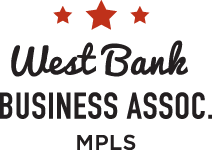What is Marketing?
If you want to grow your business marketing is a must. Often misunderstood as simply advertising, marketing is everything that goes into putting the right product, at the right place, at the right time for the customer to buy.
If marketing is a wheel then advertising is just one spoke of that wheel. Marketing can look like:
- Advertising on a billboard.
- Surveying your customers.
- Creating a website.
- Posting on social media.
- Researching consumer trends.
- Sending thank you gifts to your ten best clients.
- Adding your company to online directories.
All of these tactics and more are part of marketing
The Marketing Cycle
Common Marketing Communications Tactics
You are probably already doing a mix of these tactics, which primarily fall in the of promotion and customer service stages of the marketing cycle, to market your business today.
- Internet Marketing – Maintaining a presence for your business online using a website, email, and social media.
- Search engine optimization – A selection of techniques used by marketers to make sure that businesses appear in online search results. Google processes over 3.5 billion searches every day. People go to search engines when they have a question, a need to fill. The best time for your product to be in front of someone is when they have a need to fill, when they are looking to buy.
- Search engine marketing – Different from search engine optimization, search engine marketing is paying for exposure on relevant web searches.
- Blog marketing – Many brands publish blogs to write about their industry and nurture the interest of potential customers who browse the internet looking for information.
- Email Marketing – Using email newsletters and promotions to communicate with customers and prospects.
- Social media marketing – According to Pew Research Center, 77% of adults in the United States use social media, and that percentage only goes up with younger demographics. Many businesses now maintain profiles on several social media platforms to reach their customers where they are. It’s possible to buy targeted advertising on platforms like Facebook and Instagram to reach your specific target market at a scalable cost.
- Direct Marketing – Communicating directly with customers and prospects through mail, email, texts, fliers, and other promotional material.
- Public Relations – Issuing press releases and networking with journalists to get your business in the news.
- Print marketing – Sponsoring content in newspapers and magazine, hanging flyers, business cards, brochures.
- Traditional Advertising – Print, radio, television, billboards, etc.
- Event Marketing – Promoting your brand or products face-to-face at special events like concerts, fairs, or sports events. In contrast to advertising, event marketing targets specific individuals in hopes of making quality individual impressions.
- Word-of-mouth marketing – Satisfy your customers and your will be rewarded with trust and a group of people willing to spread the word about your business. Word-of-mouth marketing can look like rewarding customers for referrals, reviews on websites like yelp, or customer testimonials.
Tactics ≠ A Plan
On their own, these tactics are too broad to be of much use.
Many businesses create an annual plan that documents specific, actionable, measurable, relevant, and time bound marketing goals as well as the strategies and actions they will take to achieve them. Making a plan will help you track your progress and make good use of your energy, time, and resources.
Example: This Newsletter
In our marketing plan, this newsletter addresses our goals of increasing our number of members and increasing our sales of marketing and business services. The strategy is to educate local businesses and potential members about marketing strategies and tactics so that you see the value that we can bring to your business. The specific action is creating this newsletter.
Hopefully, the information is good and you will be persuaded to reach out for a 1-1 meeting, leading to a sale.



